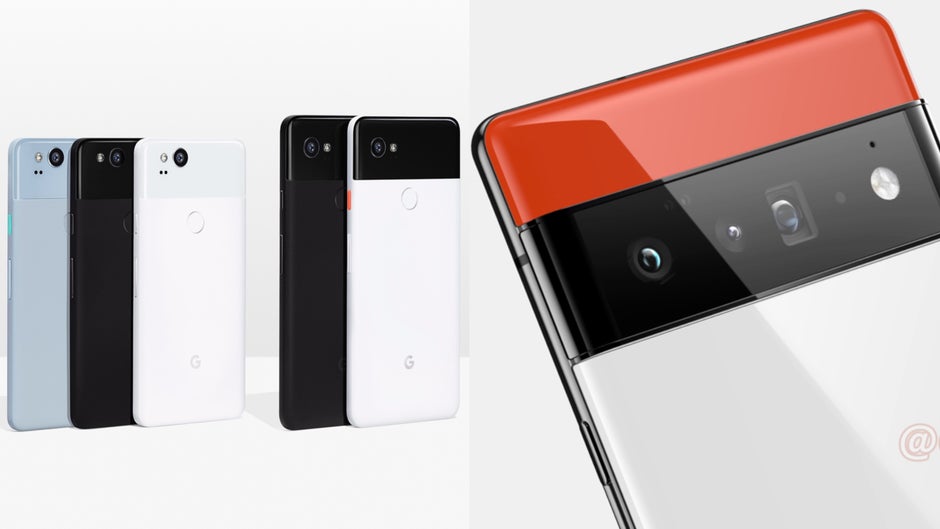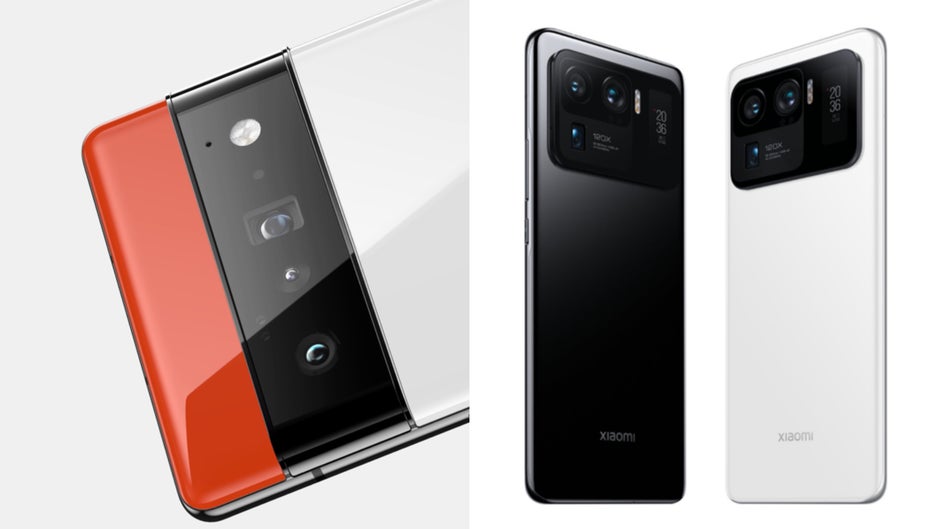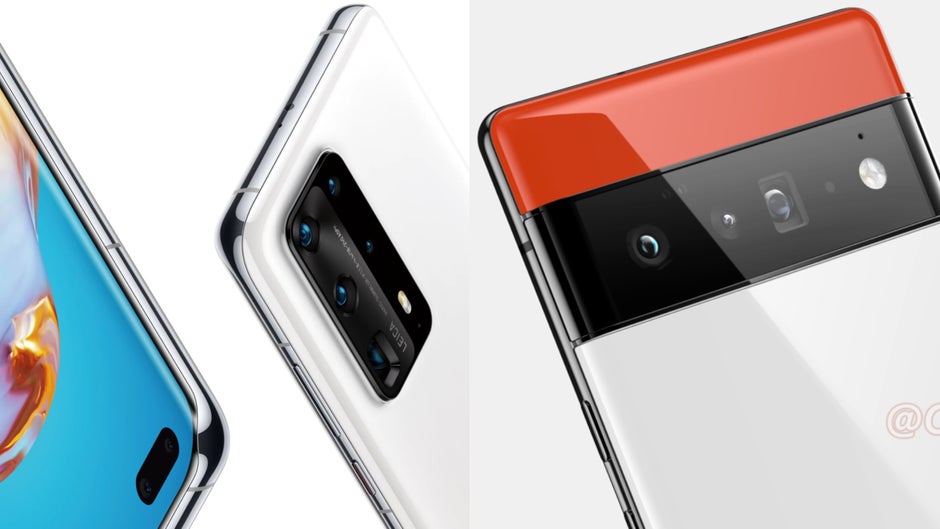Google Pixel 6 Pro and its 122MP camera system: The 4-year wait for 4 new cameras
What if I told you that if you’re using Google’s latest flagship phone – the Google Pixel 5, you’re actually using the Google Pixel 3 camera, which by itself is identical to the Pixel 2 camera? Shocked? Well, for the average consumer, that would be indeed “shocking”. In fact, some of you might feel “scammed”. Of course, the case is not-so black/white. It’s somewhere in between.First of all, yes – believe it or not, the primary camera sensor on the Google Pixel 5 is the same as the one on the Google Pixel 3, which itself is the same sensor found on the Pixel 4, which, again – is pretty similar to the one found in the 2017 Pixel 2. In other words, Google hasn’t felt the need for significant camera upgrades – you get what you get…
That”s pretty much unheard of… Most manufacturers would usually upgrade their camera sensors every two years, while it’s getting increasingly common to upgrade camera hardware every year. Companies like Huawei, and more recently Xiaomi and Samsung have really challenged the market in that regard by pushing for larger and more advanced image sensors.
Well, the wait for new camera sensors on a Pixel flagship seems to be coming to an end! The Google Pixel 6 Pro is said to feature four brand new camera sensors (front and back), with a total resolution of 122MP. What does that mean? Let’s find out!1. Old camera sensor – bad camera sensor?2. Google Pixel 6 & 6 Pro: The 50MP camera of your dreams?3. The advantages of a larger camera sensor on the Google Pixel 6
Old camera sensor – bad camera sensor?

Google hasn’t upgraded the main camera sensor on its flagship Pixel phone for 3-4 years in a row.
So, does having an old sensor mean a phone has a worse camera (experience) than competing devices that utilize newer hardware? Not always.
As every Google Pixel fan will probably tell you, the company is known for its “computational photography”. Actually, this term came into fashion exactly because of Google and their software wizardry.
Ever since the days of the Nexus 6P Google’s managed to dominate the camera wars due to their remarkable work in software processing. Namely, Nexus, and later Pixel devices, used to outperform the competition with generally one thing – aggressive HDR.
This aggressive HDR referred to as “HDR+” on Google phones, became their trademark. The Nexus 6P, Google Pixel, and Pixel 2 took photos that looked more balanced than the ones taken with competing devices. Highlights and shadows were nicely leveled; colors were natural, and the retained detail in textures was remarkable due to the previous two factors.
It was somewhere around the Pixel 3 launch when manufacturers like Samsung, and especially Apple and Huawei started to catch up and even outdo Google’s flagships when it came to the above-mentioned factors. Most notably, the iPhone XS introduced Smart HDR, ending Google’s reign in dynamic range for photos, and shot Apple far in front when it came to dynamic range in video.
Today, it’s all more closely matched. Companies seem to realize that certain HDR processing doesn’t necessarily look the best. They are trying to give us something balanced and natural instead of overly aggressive dynamic range, which can make anything look cartoonish.
Google Pixel 6 & 6 Pro: The 50MP Sony camera of your dreams?

The new 50MP Sony sensor is expected to elevate the camera experience on Google’s new flagship phone, and challenge Samsung, Apple, and Xiaomi.
But! Enough jibble-jabble… What’s new for the Google Pixel 6? Well, the camera sensors! Hurray!
Back in May, tipster Yogesh from Twitter reported that the Pixel 6 Pro would come with a large Sony sensor, “perhaps 50MP”, along with an 8MP periscope lens for 5X optical zoom, as well as an ultra-wide-angle lens, and a color temperature sensor.
While this Tweet didn’t go unnoticed, it was certainly not enough to base a whole theory on it. However, Yogesh is no longer alone in his claims. As reported earlier, famous Apple tipster Jon Prosser has now joined the party to give us the first detailed specs leak on the Pixel 6 and 6 Pro, including camera information:
- Main camera: 50MP
- Ultra-wide camera: 12MP
- Front camera: 8MP
- Main camera: 50MP
- Telephoto camera: 48MP
- Ultra-wide camera: 12MP
- Front camera: 12MP
As you might have figured out, this means the Google Pixel 6 and 6 Pro are going to make use of a brand new 50MP sensor on their respective main camera units. That’s a new (main) camera sensor for the first time since 2017!
Initially, we thought this could be Samsung’s newly-announced 50MP camera sensor, but then we referred back to the leaks from May, which clearly point towards a Sony sensor. Now, given that we already know the sensor is supposed to have a 50MP resolution, the options are quite a few, although we think Google must have picked one of three:
- The 50MP sensor found in the Xiaomi Mi 11 Ultra (1/1.2-inch)
- The 50MP sensor found in the Huawei P40 Pro/Mate 40 Pro (1/1.28-inch)
- The 50MP sensor found in the Oppo Find X3 Pro (1/1.56-inch)
That’s in order from largest to smallest, although none of them are particularly small. Put in perspective, the Google Pixel 5 has a 12MP 1/2.55-inch sensor. To understand camera sensor sizes, simply imagine a 1-inch rectangle. The closer the size is to 1-inch, the bigger the sensor. Of course, dedicated cameras go way beyond the 1-inch size, but that’s been the bar when it comes to smartphones (so far).
Note: None of the above-mentioned phones boast the largest camera sensor on a smartphone, although they come close-ish. This honor goes to Sharp’s Aquos R6, which comes with a huge 1-inch camera sensor – the same as pretty much every mainstream point-and-shoot camera.
The advantages of a larger camera sensor on the Google Pixel 6

The Xiaomi Mi 11 Ultra (right) is the smartphone with the largest camera sensor, if we don’t count Sharp’s Aquos R6, which is only available in Japan.
- Great low-light performance, perhaps even without the need for Night Mode (unless it’s too dark)
- Lower noise levels thanks to the bigger sensor, which lets in more light
- Better bokeh for natural portraits thanks to the larger sensor and (presumably) wide aperture
- Lower noise levels
- Better sharpness in dimly-lit environments
The benefits of a larger smartphone sensor are discussed here, from the perspective of the Sharp Aquos R6’s huge (for a smartphone) 1-inch sensor. We also tell you why a large sensor isn’t always a good idea.
It’s very important to note that the new 50MP sensor will be made possible thanks to the new custom-built chip that’s expected to debut on the Pixel 6 and 6 Pro. Check out our “Yes, the Google Pixel 6 will be Android’s iPhone” piece, if you want to learn more.
Pixel 6 & 6 Pro: New telephoto (zoom), ultra-wide, and selfie cameras

The Huawei P40 Pro+ was the first phone with a 10x optical zoom camera, before Samsung brought it to the Galaxy S21 Ultra.
Sure, the main sensor upgrade is long-anticipated and definitely the most important one. However, there’s one more new camera on the Pixel 6 and three new sensors on the Pixel 6 Pro!
Pixel 6 & 6 Pro ultra-wide-angle camera
Pixel 6 Pro telephoto (zoom) camera
As you might have noticed, Twitter tipster Yogesh reported on the 50MP main sensor of the Pixel 6 back in May. This turned out to be in line with what Jon Prosser revealed about the next Google flagship. However, their information about the telephoto camera on the new Google phones is a bit contradictory. Yogesh tells us about an 8MP periscope lens, while Jon Prosser’s specs show a 48MP tele camera.
However, if Jon Prosser’s 48MP prediction is correct, it’s very likely that the sensor might be the same as the one found on the OnePlus 9 Pro, which offers 3.3x magnification. Personally, I’d take a periscope zoom lens over a regular tele camera any day, but Google might be so confident in its digital zooming algorithm that it doesn’t feel the need for a periscope zoom camera.
Either way, Google’s Pixel 6 and 6 Pro are shaping up to be contenders for the best flagship phones of 2021, and we can’t wait to see what they can do.
For all the latest Technology News Click Here
For the latest news and updates, follow us on Google News.
